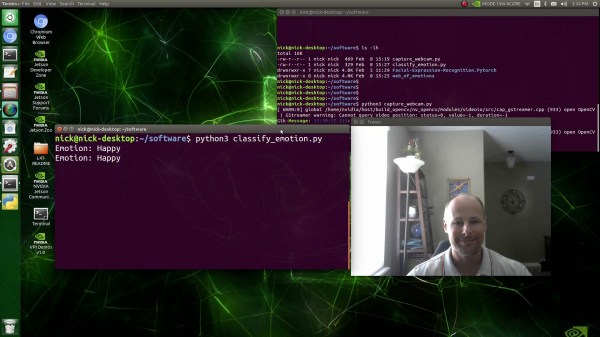We all seem to intuitively know that a lot of what we do online is not great for our mental health. Hang out on enough social media platforms and you can practically feel the changes your mind inflicts on your body as a result of what you see — the racing heart, the tight facial expression, the clenched fists raised in seething rage. Not on Hackaday, of course — nothing but sweetness and light here.
That’s all highly subjective, of course. If you’d like to quantify your online misery more objectively, take a look at the aptly named BrowZen, a machine learning application by [Nick Bild]. Built around an NVIDIA Jetson Xavier NX and a web camera, BrowZen captures images of the user’s face periodically. The expression on the user’s face is classified using a facial recognition model that has been trained to recognize facial postures related to emotions like anger, surprise, fear, and happiness. The app captures your mood and which website you’re currently looking at and stores the results in a database. Handy charts let you know which sites are best for your state of mind; it’s not much of a surprise that Twitter induces rage while Hackaday pushes [Nick]’s happiness button. See? Sweetness and light.
Seriously, we could see something like this being very useful for psychological testing, marketing research, or even medical assessments. This adds to [Nick]’s array of AI apps, which range from tracking which surfaces you touch in a room to preventing you from committing a fireable offense on a video conference.
Continue reading “Machine Learning Helps You Track Your Internet Misery Index”










